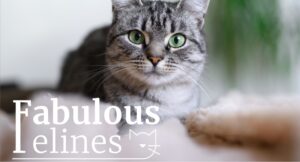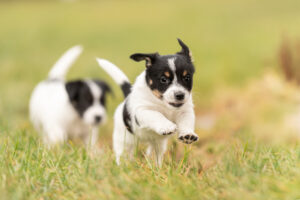When it comes to dog breeds, pet parents are often biased with their view of what they believe is the best breed based on their personal experience or preferences. To identify the most popular dog breeds in Australia, we analysed our policy data to reveal the favourites.
We also worked with our Veterinary Advisors to create a snapshot of the key characteristics, facts and insights of each breed.
Which dog breeds made the top 10 breed list?
1. Cavoodle
Coming in first place was the engaging, enthusiastic, and intelligent Cavoodle. Typically weighing between 5 and 12kg, the Cavoodle is suitable for active households who have time to exercise them daily and provide them with plenty of attention.
Based on 2023 PetSure claims data, Cavoodles may be prone to gastrointestinal conditions, skin allergies, ear infections, and eating foreign objects.
2. Golden Retriever
The Golden Retriever came in at second place for the top 10 breeds list. As a large breed, Golden Retrievers typically weigh between 25 to 34kgs and need plenty of exercise. Often described as intelligent, friendly, and devoted, they are better suited to large properties with an outdoor space.
With a dense and wavy coat, Golden Retrievers can shed so regular grooming is required. According to PetSure claims data, they can be susceptible to skin conditions including lick dermatitis, hair loss and allergic skin disorders.
3. French Bulldog
Coming in third place was the playful and energetic French Bulldog. As a smaller breed, French Bulldogs may be suitable for apartment living but they still require a medium amount of exercise.
PetSure claims data for 2023 shows that the common health conditions for French Bulldogs are skin allergies, gastrointestinal complaints, and ear infections.
4. Miniature Dachshund
The smooth-haired miniature dachshund is often described as curious, brave, and lively. The miniature dachshund is a great companion dog for active singles, families or the elderly.
As a small breed, they normally weigh between 4 to 5kgs and are just 13 to 15cm tall.
Miniature Dachshunds may be prone to skin allergies, gastrointestinal complaints, and ear infections. See our Miniature Dachshund breed profile for more breed insights.
5. Border Collie
The highly intelligent and very energetic Border Collie made it to the top 5 of the list of popular dog breeds. Classified as a medium-large breed, Bordie Collies normally weigh around 14 to 20kgs and are suitable for active families who can exercise them regularly.
With a medium-long coat, Bordie Collies often shed so this is something pet parents should be mindful of.
The most common health condition in 2023 for Bordie Collies was gastrointestinal complaints, skin allergies, and traumatic injuries.
6. Golden Doodle (Groodle)
The Golden Doodle, or affectionately known as the ‘Groodle’, is one of Australia’s most popular dog breeds. As an affectionate and active breed, Groodles need plenty of exercise and are suitable for active households with larger properties.
The Groodle generally measures 51 to 61cms and weighs between 23 to 37kgs. With a medium-long wavy or curly coat, Groodles may shed so regular grooming is needed.
Based on 2023 PetSure data, Groodles may be prone to skin conditions including allergies, gastrointestinal complaints, and traumatic injuries.
See our Groodle breed profile to learn more about this breed.
7. Labrador
The Labrador came in seventh place. Outgoing, even-tempered, and friendly, Labradors are intelligent and energetic and need a high level of exercise, this makes them better suited for larger properties. As a medium to large breed, Labradors typically measure 55-62cm high and weigh between 25-36kg.
With a short and thick coat, Labradors shed a lot so frequent grooming is recommended. As for common health conditions for Labradors in 2023, they can be susceptible to skin allergies, ear infections, and gastrointestinal complaints. See our Labrador breed profile to learn more.
8. Staffordshire Bull Terrier
As a medium-sized breed, the Staffordshire Bull Terrier typically weighs between 11 to 17kgs and requires a high level of exercise, making them best suited for pet parents with an active lifestyle.
Their temperament is bold, affectionate, and courageous. They can be reactive to other dogs and suffer from anxiety. This makes them best suited to experienced dog people with an active lifestyle.
Based on 2023 PetSure claims data*, Staffordshire Bull Terriers are prone to skin allergies, ear infections, and gastrointestinal complaints.
9. German Shepherd
Number nine on the list the German Shepherd. Described as intelligent, loyal, and active this breed is best suited for active people who are experienced with dogs. With a medium-length thick double coat, German Shepherds shed all year round, so regular grooming is needed.
Based on 2023 PetSure claims data, German Shepherds can experience health conditions including skin allergies, ear infections, and gastrointestinal complaints.
Want to learn more about German Shepherds? Check out our breed profile.
10. Labradoodle
Rounding out the top ten list of popular dog breeds is the intelligent, friendly, and energetic family-friendly Labradoodle. As a medium-long wavy or curly breed, Labradoodles are great companion animals for active families in larger properties.
Common health conditions for the Labradoodle include ear infections, skin allergies, and gastrointestinal complaints.
Whether you’re an existing pet parent or you’re looking to buy a companion dog, knowing popular dog breeds and the temperament, characteristics and common health conditions of a breed is a key to being a responsible pet owner because a pet is for life.
Pet insurance can help by covering a portion of the eligible vet bill if the unexpected happens. Because it is difficult to predict the costs of veterinary care, it can help to have measures in place to help prepare for the unexpected. Check out our partner network and explore our policy tools to find a pet insurance policy.
Not all conditions or items are covered by Pet Insurance. Refer to the applicable Product Disclosure Statement for information about coverage and exclusions.



 Fact checked
Fact checked





